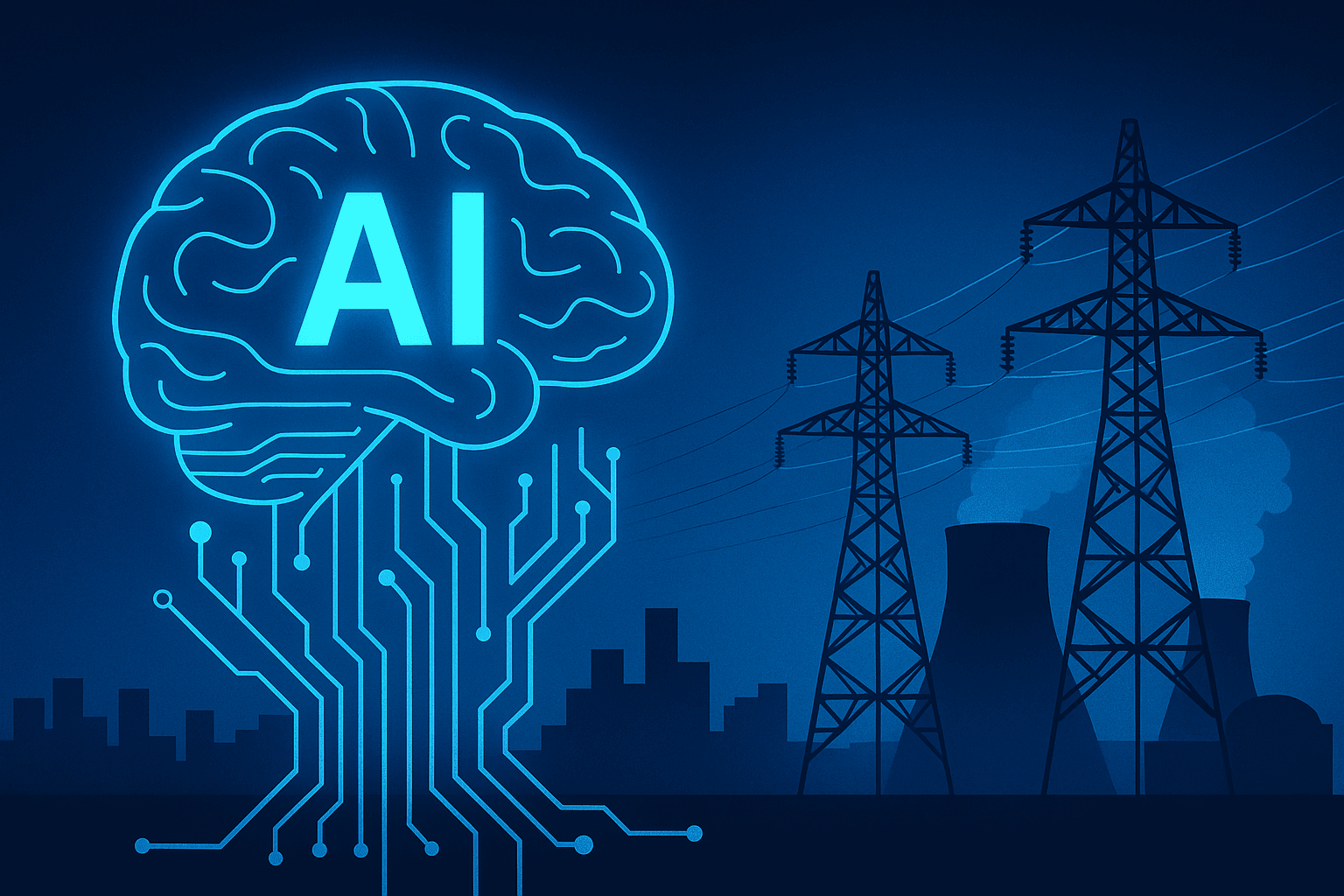1. Training a Large AI Model Matches the Energy Use of 100+ U.S. Homes
Training GPT-3 (175 billion parameters) consumed approximately 1,287 megawatt-hours (MWh) of electricity, equivalent to the annual energy use of ~121 U.S. households (based on ~10,600 kWh/year per home, per EIA 2023). Modern models like GPT-4 likely use even more due to increased complexity.
Source: Patterson et al., 2021; U.S. Energy Information Administration (EIA), 2023.
2. Data Centers May Consume 3–8% of Global Electricity by 2030
In 2022, data centers accounted for 1.5% of global electricity (460 TWh). With AI and cloud computing growth, projections estimate 3–8% by 2030, driven by hyperscale facilities and AI workloads, though efficiency gains could temper this.
Source: IEA, 2023; Andrae, 2020.
3. Inference Outpaces Training in Energy Use at Scale
While training large AI models is energy-intensive, inference (running models for user queries) dominates long-term energy consumption. For chatbots or recommendation systems serving billions, inference can account for 60–90% of total energy costs.
Source: Desislavov et al., 2022; industry reports (Google, Meta).
4. A Single AI Chat Uses 3–10x More Energy Than a Google Search
One interaction with a large language model (e.g., ChatGPT-like systems) consumes ~0.001–0.01 kWh, compared to ~0.0003–0.001 kWh for a Google search, making it 3–10x more energy-intensive.
Source: Strubell et al., 2023; Luccioni et al., 2024.
5. Nvidia’s GPUs Fuel Power-Hungry AI Data Centers
Nvidia’s dominance in AI hardware, with GPUs like the H100 (~700W each), drives data center power demands. A single AI cluster with 10,000 GPUs can require 7–20 MW, and hyperscale centers often exceed 100 MW.
Source: Nvidia, 2023; CBRE Data Center Report, 2024.
6. AI Data Centers Power the Equivalent of Small Cities
Hyperscale data centers for AI workloads typically consume 100–400 MW, enough to power ~100,000–400,000 U.S. homes (at ~1 kW per household). For example, a 300 MW facility matches the energy needs of a small city.
Source: CBRE, 2024; EIA, 2023.
7. AI Drives Massive Water Consumption for Cooling
Training large models can indirectly consume 1–10 million liters of water through cooling and power generation. Microsoft’s 2022 water use rose 34% (2.1 billion gallons), largely due to AI-driven data center expansion.
Source: Li et al., 2023; Microsoft Sustainability Report, 2022.
8. Grid Constraints Slow AI Data Center Growth
Regions like Oregon and Arizona face utility constraints, with some projects delayed due to insufficient power capacity. For example, Arizona’s APS has postponed new data center connections, though outright bans are rare.
Source: Oregon Public Radio, 2023; AZ Central, 2024.
9. AI Could Rival Major Industries in Energy Use by 2040
If AI growth continues unchecked, its electricity consumption could approach sectors like aviation (1,000 TWh) or steel (2,500 TWh) by 2040. Efficiency improvements and regulation may mitigate this trajectory.
Source: Andrae, 2020; IEA sectoral data, 2023.
10. Renewables Struggle to Meet AI’s 24/7 Power Needs
Solar and wind (~12% of global electricity in 2023) face intermittency and land use challenges, insufficient for AI’s constant energy demands. This has spurred interest in nuclear, with Microsoft and Google announcing nuclear deals in 2024.
Source: IEA, 2023; Nature, 2024; industry announcements.
11. AI’s Carbon Footprint Varies by Region
AI data centers in coal-heavy grids (e.g., parts of China) emit up to 5x more CO2 per MWh than those in renewable-rich regions (e.g., Scandinavia). A single model’s training can emit 500–1,000 tons of CO2, depending on location.
Source: Lacoste et al., 2019; Strubell et al., 2023.
12. Model Efficiency Is Reducing Energy Per Query
Advances in model compression and quantization (e.g., smaller models like LLaMA) cut energy use per inference by 20–50% compared to 2020 baselines. However, growing user demand often offsets these gains.
Source: Hugging Face, 2024; Meta AI research, 2023.
13. Edge AI Lowers Data Center Energy Demands
Running AI on edge devices (e.g., smartphones, IoT) reduces reliance on cloud data centers. For example, on-device inference for speech recognition uses ~10–100x less energy than cloud-based processing.
Source: ACM Computing Surveys, 2024; Qualcomm research, 2023.
14. AI Training Clusters Generate Significant E-Waste
High-performance GPUs have short lifecycles (~2–3 years), contributing to e-waste. A single AI training cluster replacement can generate tons of electronic waste, with recycling rates below 40% globally.
Source: UN E-Waste Monitor, 2024; data center industry reports.
15. Energy Costs Drive AI’s Operating Expenses
For companies like OpenAI, energy costs for inference can exceed $1 million daily for large-scale models serving millions of users, with electricity often comprising 20–30% of operational budgets.
Source: Estimated from AWS data center costs, 2024; SemiAnalysis, 2023.



